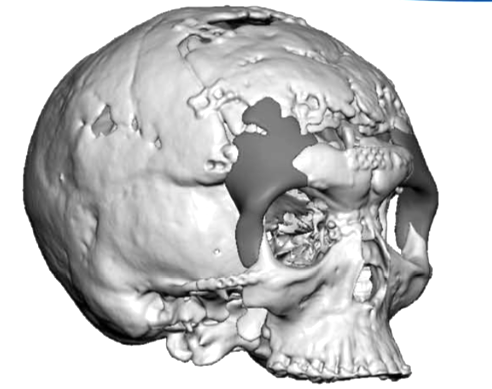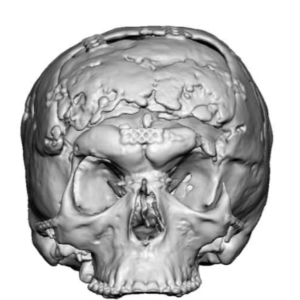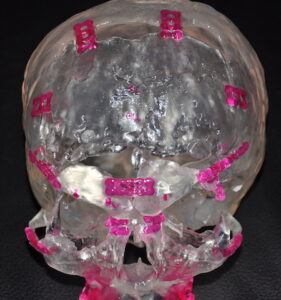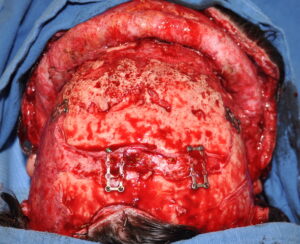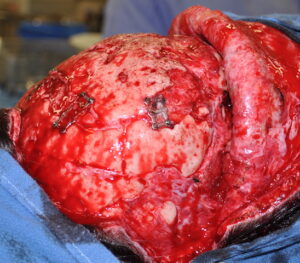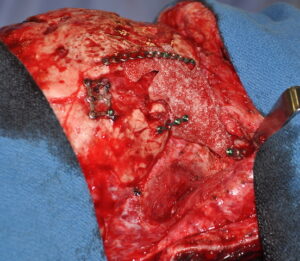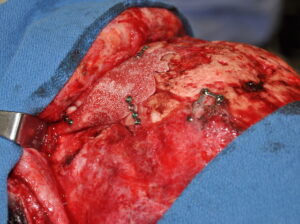Background: Residual defects of the forehead and orbital regions are very common from prior early craniofacial surgery procedures. While moving skull and facial bones around at a young age are an ideal time for the bones to heal and open bone gaps to fit in, long term such skull and orbital bone reshaping procedures can still have residual partial and full-thickness bone defects.
While many of these bone contour defects can be filled in and covered over with bone cements as an older child or teenager, certain full-thickness defects can not. One of these craniofacial defects that requires a solid reconstruction is that of the lateral brow/orbital rims. This is one of the four walls of the orbit for which there is no substitute for an assured solid reconstruction. It is a rare craniofacial defect that is both complex in shape and must be solid as it supports numerous soft tissue attachments.

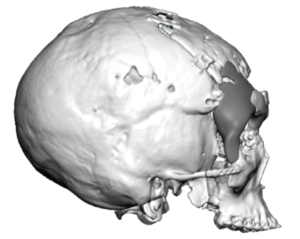

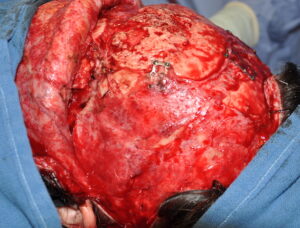

HTR implants has been around for three decades and has an excellent track record of use in full thickness skull defects. Its hydrophilic nature and intramaterial porosity allows for extensive tissue ingrowth. These material characteristics makes it superior to the use of autologous cranial bone grafts those survival in an open space (where much of the graft does not contact bone) is far from assured.
Case Highlights:
1) Complex full thickness bone defects of the brow and eye region requires a custom implant design approach.
2) Reconstruction of the important lateral brow and orbital rim defects require a synthetic material that allows tissue ingrowth.
3) The HTR material can be custom made into complex shapes and its rigidity requires requires a wide exposure for placement.
Dr. Barry Eppley
Indianapolis, Indiana

